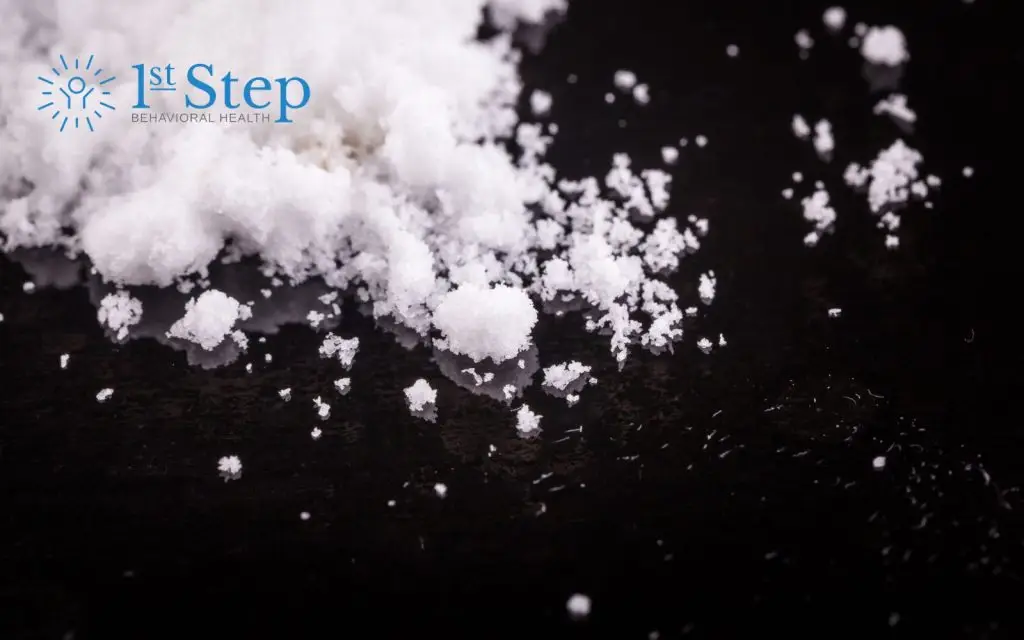Methamphetamine, commonly known as meth, is a powerful and highly addictive stimulant that has torn through communities across the U.S. for decades. While public awareness around meth use and its dangers continues to grow, one crucial aspect is often overlooked: understanding the slang terms and street names used to describe the drug.
Knowing these terms can help you recognize warning signs, whether you’re struggling with addiction yourself or worried about a loved one. This guide explores the most common meth slang, how it’s used, why it matters, and what steps you can take if you suspect someone is using it.
What Is Meth?
Methamphetamine is a synthetic stimulant that affects the central nervous system. It can increase energy, elevate mood, and suppress appetite—but it also causes severe health problems, including heart damage, psychosis, and brain changes that affect memory and emotion.
According to the Substance Abuse and Mental Health Services Administration (SAMHSA), over 2.5 million people in the United States reported using meth in the past year (2022 data). Of these, 1.6 million had a methamphetamine use disorder.
The dangers are compounded by the rise of illicit meth production, often laced with other substances like fentanyl, which drastically increases overdose risk.
Why Knowing Slang Matters
Slang and street names for meth evolve constantly. They vary by region, social group, and even generation. These terms are designed to obscure conversations about meth use from outsiders, particularly law enforcement, employers, and concerned family members.
By recognizing these words, you may be able to:
- Detect meth-related behavior earlier.
- Understand coded messages in texts, emails, or conversations.
- Open up more informed, non-judgmental dialogue with someone you’re worried about.
Common Slang Terms for Methamphetamine
Below are the most widely used and current street names for meth. This list is not exhaustive, but it includes some of the most recognizable and relevant slang as of 2025.
Crystal / Crystal Meth
The most widely recognized name, “crystal,” refers to meth’s typical form—clear, chunky crystals that resemble rock candy or shards of glass. “Crystal meth” is often smoked using a pipe but can also be snorted, injected, or ingested.
Ice
“Ice” is another reference to the crystalline appearance of high-purity meth. The term is often used interchangeably with “crystal,” primarily when referring to methamphetamine hydrochloride, the smokable form.
Tina
This coded name is commonly used in LGBTQ+ communities, particularly among gay men. “Tina” sounds innocuous—like a woman’s name—which helps users disguise discussions around meth use. In some circles, “partying with Tina” or “PNP” (party and play) refers to meth use during sexual activity.
Glass
“Glass” refers again to the drug’s physical appearance. People might use this term casually in conversation or on social media to avoid detection.
Crank
A somewhat older term, “crank,” was originally used to describe lower-quality, powder-form meth. It’s less common now but still used in some rural or biker communities.
Shards
A visual reference to the jagged, crystal-like shape of meth. “Shards” typically describe high-purity meth sold in rock-like chunks.
Chalk
Refers to the powder form of meth, often off-white and chalky in appearance. It’s typically snorted rather than smoked.
Go Fast
Slang for the stimulant effect meth has on the body—users may feel hyper, restless, and energetic for hours or even days. “Go fast” is often used among younger users or those new to meth culture.
Gak / G
Both “gak” and “G” are shorthand terms, sometimes used interchangeably with other stimulant drugs. Their meaning can vary based on region, context, and user group, so caution is needed when interpreting them.
Stove Top / Shake and Bake
These terms don’t refer to the drug itself but rather the method of production. “Shake and bake” meth is made in small, makeshift labs—often in plastic bottles—with dangerous, volatile chemicals. If someone refers to these terms, they may be talking about local meth manufacturing.
Meth Slang in Use: Phrases and Codes
Slang terms often appear in coded phrases that can hide meth use in plain sight. Here are some examples:
- “Twacking”: Acting erratic, paranoid, or overactive—often used to describe someone high on meth.
- “Skating”: A euphemism for using meth; the term evokes the sense of fast movement and gliding.
- “Spun” or “Spun Out”: Being high for an extended period, usually accompanied by insomnia, hallucinations, or obsessive behavior.
- “Chasing the white dragon”: A variation on the phrase used for heroin, referring to the act of smoking meth and watching the smoke trail.
Understanding these phrases helps decode social media posts, text messages, or verbal conversations that might otherwise seem harmless.
Online and Social Media Codes
As more drug-related activity moves online, slang terms for meth have adapted accordingly. Emojis like the snowflake, diamond, or lightning bolt might be used in drug-related messages. Abbreviations like “T” (for Tina) or “G” can also show up in dating apps or forums, often alongside phrases like “PNP” or “420 friendly” (which originally meant marijuana but now sometimes includes harder drugs depending on the context).
Recognizing Meth Use
It’s tempting to view slang as just another way to talk, but when it comes to meth, this coded language can deepen denial and delay intervention. If a loved one is using words like “Tina” or “go fast” without explanation, it could be a red flag, especially when paired with:
- Sudden weight loss
- Intense mood swings or aggression
- Erratic sleep patterns
- Dilated pupils or rapid speech
- Paranoia or hallucinations
Knowing the language gives you the power to act earlier and more effectively. This knowledge can help you or a loved one seek meth addiction treatment as quickly as possible.
The Role of Awareness in Recovery
Recovery often begins with recognition, and sometimes, that recognition starts with understanding the words being used.
If you’re someone battling meth use, knowing how the language helps disguise behavior might prompt you to reflect on how deeply the addiction has taken root. If you’re a friend or family member, this awareness can help break through denial and allow you to approach your loved one with empathy, understanding, and informed support.
Addiction thrives in secrecy. Language—especially coded or misleading language—can help perpetuate that secrecy. Learning the slang is a simple but powerful step toward breaking the silence.
What You Can Do Next
If you or someone you love is struggling with meth use, there are real, effective paths to help.
- Talk to someone. Whether it’s a trusted friend, a counselor, or a support group, breaking the silence is often the first—and hardest—step.
- Consider professional treatment. Meth addiction typically requires more than willpower. Detox, therapy, and sometimes medication can all play roles in recovery.
- Use available resources. Contact the First Step Behavioral Health or organizations like the National Helpline for SAMHSA (1-800-662-HELP) offer free, confidential support 24/7.
Final Thought
Language is more than communication—it’s culture, camouflage, and sometimes, a cry for help. When it comes to methamphetamine, understanding the slang isn’t just about staying informed. It’s about staying connected. And connection is at the heart of recovery.
If you or someone you love struggles with substance abuse or addiction, you are not alone. Find the compassionate treatment, resources, and ongoing support you need at First Step Behavioral Health. Contact our intake specialists to learn about our programs or to schedule an intake appointment.
FAQ: Understanding Meth Slang and Related Concerns
1. How do slang terms for meth change over time?
Slang evolves with culture, technology, and regional use. New terms often emerge through online platforms, music, or specific subcultures. As law enforcement and the public catch on, users may adopt different phrases to maintain secrecy. This constant shift makes it essential to stay updated if you’re monitoring potential use in a loved one or community.
2. Can meth slang be used to buy or sell drugs online?
Yes. On social media, forums, and messaging apps, slang and abbreviations help conceal illicit activity. Terms like “Tina,” “G,” or “party favors” are often used in combination with coded emojis or hashtags. This type of communication may occur in plain sight—on dating apps, group chats, or classified sites.
3. Are there slang terms specific to meth use in certain communities?
Absolutely. For example, “Tina” is more commonly used in LGBTQ+ party scenes, while “crank” might still appear in rural or older biker circles. Geographic location, age group, and peer network all influence the slang someone may use.
4. How can parents or loved ones talk about meth slang without pushing someone away?
Use curiosity, not confrontation. Ask open-ended questions like, “Hey, I came across this word—what does it mean to you?” Avoid accusations or assumptions. Building trust and keeping communication open is far more effective than policing language alone.
5. Is recognizing slang enough to confirm meth use?
Not by itself. Slang can be a red flag, but it should be considered alongside behavior changes, physical symptoms, and context. Many slang terms can have multiple meanings depending on the group or environment. If you’re concerned, consult a professional for guidance before jumping to conclusions.
6. What should I do if I find messages or notes with meth-related slang?
Document what you find and assess the surrounding context—timing, tone, and who it involves. Then, approach the individual with compassion. Avoid shaming them. If you’re unsure how to proceed, reach out to a counselor, addiction specialist, or support group for next steps.
Sources:
Jump to a Section
Call (855) 425-4846
